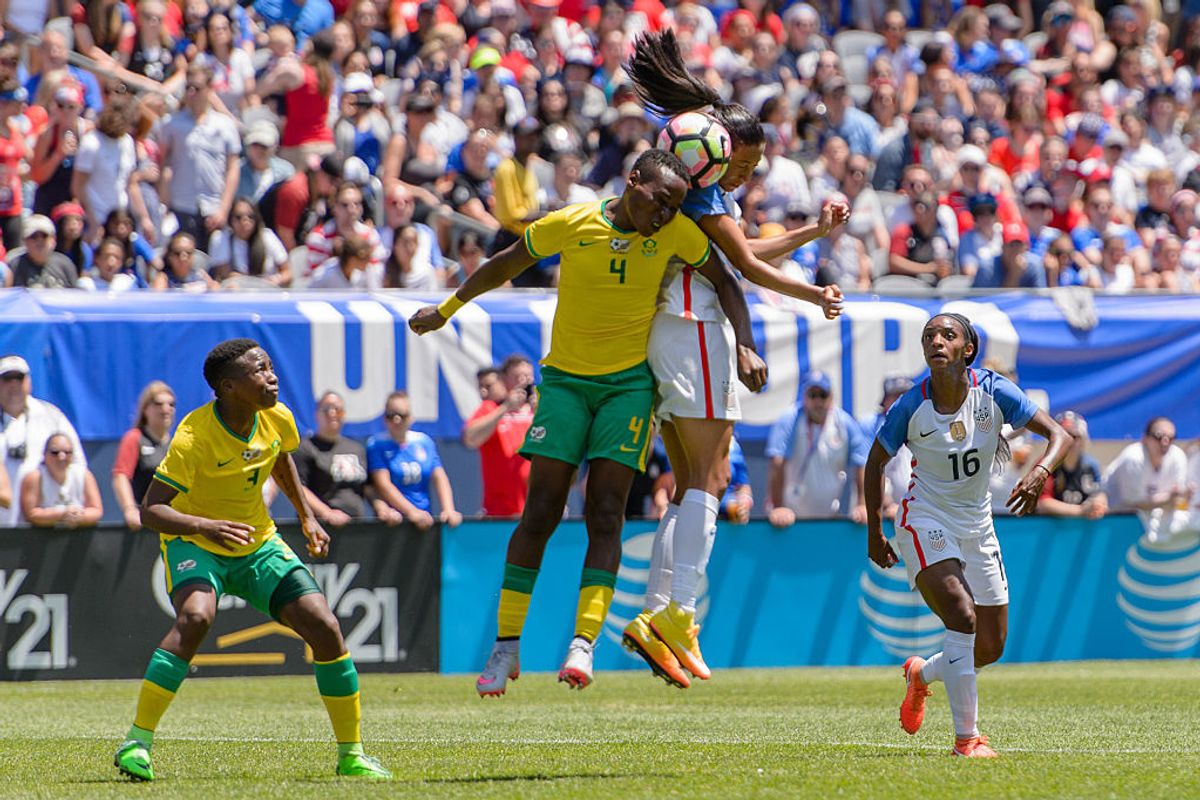
09 July 2016: South Africa defender Noko Matlou (4) and United States forward Christen Press (12) both attempt to head the ball during an international friendly soccer match between South Africa and USA at Soldier Field in Chicago, IL. USA won 1-0.
Photo by Daniel Bartel/Icon Sportswire via Getty Images


